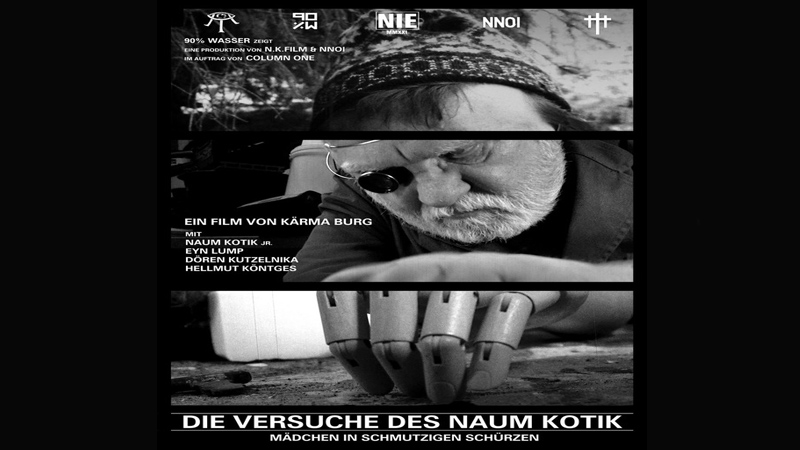The Experiments of Naum Kotik

CAT INDEX
CAT INDEX OVERVIEW
SCREENPLAY
MAKING
ACTING
Review of ‘The Experiments of Naum Kotik’ | Written by Rohan Bhattacharya
Editing is invisible in cinema: a statement most film editors agree to and abide by. While good editing is seamless and unnoticeable, it rarely makes a film stand out to the audience. Noticeable editing when done impactfully with the right motivation and flow can turn a mediocre story into a great film. The above statement holds more strongly in the case of documentary films, where the editor’s role as the ‘second screenwriter’ is really put to the test. Often-times, it is the editor whohe responsibility to put together the entire narrative of a documentary film. What is most fascinating about the m is given tovie ‘The Experiments of Naum Kotik’ isn’t Karma Burg’s retelling of Naum Kotik’s experiments; but it is how he weaves various images together to help us experience the experiments ourselves.
‘The Experiments of Naum Kotik’ is a documentary feature by Karma Burg. Kotik’s grandson is obsessed with his grandfather’s experiments; so much so that he becomes the living embodiment of his late ancestor. Naum Kotik Jr. adorns his grandfather’s clothes, and studies his experiments with the tenacity of a child who would not let go of his favorite toy. Karma Burg attempts to prove Naum Kotik’s hypothesis that the transfer of thoughts and memories is very much possible, by utilizing his muse’s grandson and his research on his grandfather’s experiments through the art of cinema. The documentary showcases two incomparable versions of Naum Kotik’s original screenplays, named ‘Girls in Dirty Aprons.’ The filmmaker weaves together an extremely impressive narrative with interviews, scenes from Naum Kotik’s original films, and montage sequences.
A documentary film should be capable of weaving together narrative with stories from real life and presenting them to us in an interesting manner. Karma Burg does this, and much more in ‘The Experiments of Naum Kotik.’ What is most fascinating about the film is its dreamlike treatment that pulls us away from the reality and complexity of the experiments. The 16:9 aspect ratio, a more documentary-style camera work, and the impactful use of monochrome and color in the film entraps us in a universe that is between reality and fantasy. The theme of thoughts and memories is strong set-in stone when the Naum Kotik Jr’s character adorns his grandfather's clothes, and also his person, then begins to explain what the experiments are all about!
The theme is further established with the excellent use of stop-motion animation and visuals symbolizing the transfer of thoughts and memories until the very last scene when we are jolted out of the trans that we were put into. Puppet-like miniature models are brought on to a stage and are played to showcase the overwhelming nature of memories and how they might consume a human’s psyche. The elaborate sets and enthralling visuals take us back to 1920’s Germany, when German Expressionism was at its peak, and artists relied heavily upon visual juxtaposition to tell a story, refusing to follow the bland style of American Hollywood cinema.
Karma Burg heavily utilizes the Kuleshov effect, paired with a series of intellectual and over-tonal montage styles; then beautifully transitioning to scenes that beautifully flow join the very distinct scenes together to create linearity in a narrative that many would call non-linear. One scene was the cutting between the character in the woods and the frog that stares directly at him; what was unexpected was the seamless transition to a scene where an electronic device walks away, out of the frame. This treatment only saw a resolution when the mechanical device was brought back and was seemingly crushed by our protagonist, only for us to find out that it was never there! This further amplified the dream-like feeling that one would experience while watching this documentary.
‘The Experiments of Naum Kotik’ by Karma Burg is art. It makes us think, contemplate and feel the action that happens on screen. The colors, the sound, and the visual juxtaposition are well integrated in a seamless narrative style, bringing us closer to the actualizing the thoughts and memories of Naum Kotik himself.
Rohan Bhattacharya is a video editor, filmmaker and writer. His film Komorebi won the second prize in ‘South Asia Japanese Language Short Film Competition,’ organized by The Japan Foundation, New Delhi and his latest film “Tsubaki” has been screened at the Tokyo Short Film Festival in Japan. His production house Sunkaku Productions makes movies in Japanese language to create a bridge of culture between India and Japan.


